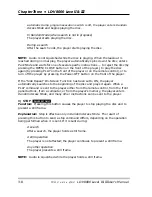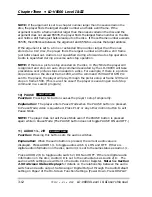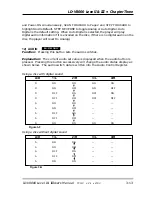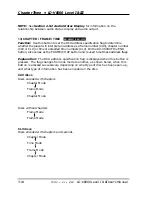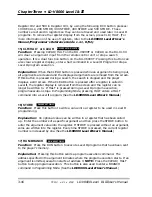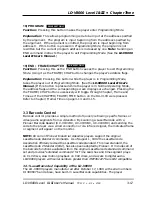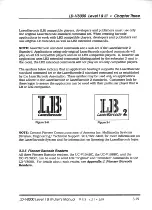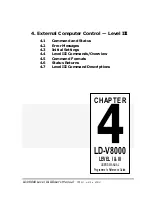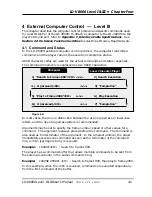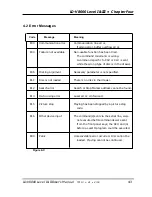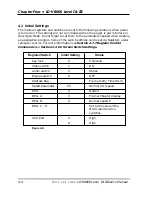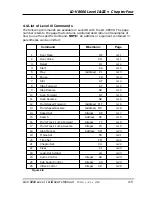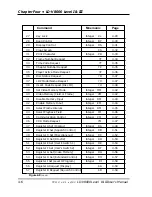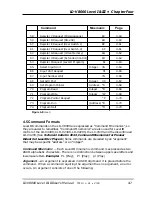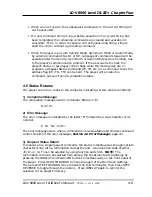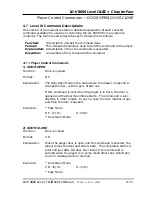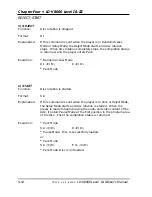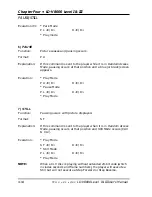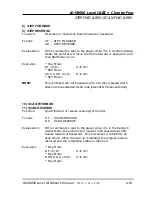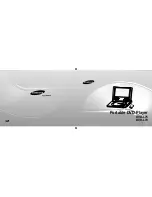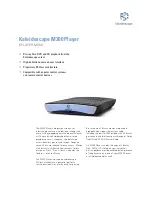
In the command line, codes such as <SPACE> or <LF> (line feed) that do not affect
player operation are ignored. The length of the command line is limited to the
buffer size. For the LD-V8000, the length of a command line is 20 characters. The
<CR> or <LF> are not included in the buffer size.
When all the commands are completely executed, the player transmits the
“completion” message. (It sends an “R” <CR>.) If an error occurs, an error message
such as E04 <CR> is returned by the player. This indicates the error occurrence,
along with the error code. See
Section 4.2 Error Messages
, page 4-3. The
automatic return of an “R” following command execution is called
Automatic
Status
.
Automatic Status
is very useful when working with some computer
programs, because it allows the program to know the appropriate time to send the
next command. If this function is not used, the command processing time must
be taken into consideration before the next command is sent. To set Automatic
Status ON or OFF, see the Level III command description for
Communication
Control
, page 4-38.
4.1.1 Request Status
When an error message is received, it may be necessary to determine the player’s
current status in order to continue a program. A variety of conditions can occur
which may cause an error code to be sent. Since actual hardware failure in the
player is a relatively rare event, other conditions may be detected which would
allow a program to recover and continue operation. Even when there is no error,
there are occasions when player status or disc information is useful. In such
cases, the
Request Status
function can be used.
The user may want to find out the current frame number even if there is no error.
Request Status
commands can be useful under these conditions. Nineteen
Request
Status
commands are available on the LD-V8000.
The main
Request Status
commands in Level III are as follows:
1) To know the active mode of the player:
?P
2) To know the current frame number, time code, or chapter:
?F, ?T, ?C
NOTE:
These and additional
Request Status
commands are described in
Section 4.7
The status functions are summarized below.
Chapter Four • LD-V8000 Level I & III
Status Reporting
Automatic Status
Auto-Completion Message
Error Indication Message
Request Status
4-2
TP 113 v. 2.1 • 2/93
LD-V8000 Level I & III User’s Manual
Figure 4-B

